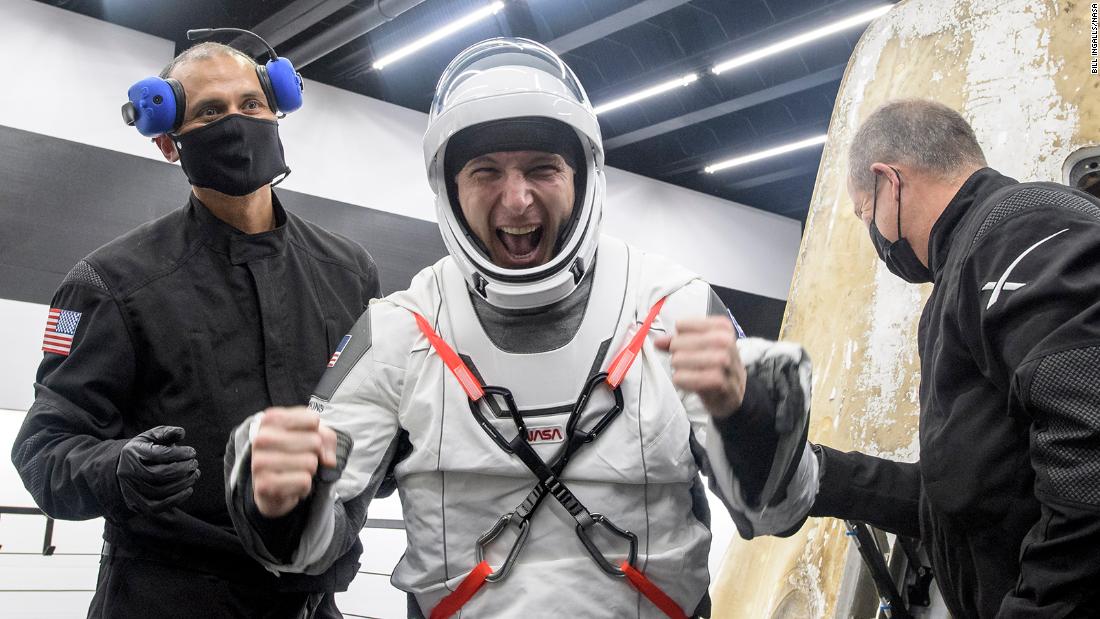The SpaceX spacecraft flew from outer space on Sunday morning and upon entering the planet it deployed its parachute in the Gulf of Mexico, marking the end of a multi-record mission.
Astronauts Michael Hopkins, Victor Glover, Shannon Walker of NASA, and Soichi Noguchi of the Japanese space agency boarded their Crew Dragon capsule on Saturday afternoon and spent the entire night aboard the fully autonomous 4-meter-wide capsule while it prepared the engine and carried out maneuvers for re-entry.
The spacecraft fired its engines to break through Earth’s thick atmosphere around 2:00 a.m. (Miami time), and the capsule deployed a series of billowing parachutes to slow its descent before splashing off the coast of Panama City. , Florida at 2:56 am
The safe return of the astronauts is the end of the historic mission for NASA and SpaceX, dubbed Crew-1, which set a record for the longest time in space, more than 5 months, of a crew that launched on board. of a spaceship built in the United States.
This is only the second time that SpaceX and NASA have brought astronauts home aboard a Crew Dragon spacecraft, following the historic return of NASA astronauts Robert Behnken and Douglas Hurley from SpaceX’s Demo-2 mission in August. 2020. Behnken described reentry as the most moving part of the return trip.
Two NASA astronauts return to Earth
“If I have an appetite, it will be an advantage,” Hopkins said during a virtual press conference Monday.
This was Glover’s first mission in space, and his assignment was historic because he became the first black person to become a full-time ISS staff member.
“One thing that really struck me deeply was the first time I got up from my seat after [nuestra nave espacial] I was safely in orbit, I looked out the window and saw Earth from about 252 miles up, “Glover said. “I’ll never forget that moment… it wasn’t about the view. It was how the sight made me feel… Earth is amazing. Is beautiful. It protects us, so we must work hard to protect it. ”
Ahead of its launch in November, the Crew-1 team named their Crew Dragon spacecraft “Resilience” in honor of the NASA and SpaceX teams that worked through a pandemic to get their mission off the ground, as well as the global public. , which dealt with covid-19, as well as widespread recognition of racial injustices in the months leading up to Crew-1’s launch.
Support teams are working around the SpaceX Crew Dragon Resilience spacecraft shortly after it landed.
Glover said the crew carried a resilience mantra with them during their time in space, noting that they had to undertake an unexpected spacewalk for minor repairs outside the lab: “Resilience is one of the most important aspects in this business. and exploration, “Glover said Monday.
The United States went almost a decade without the ability to launch astronauts into space after the Space Shuttle’s retirement in 2011, and NASA was forced to rely on the Russian Soyuz spacecraft to send astronauts to the ISS, which according to the The agency left the multi-million dollar orbital laboratory understaffed.
13 astronauts were on board at the same time in 2009. That number has occasionally dropped to three on multiple occasions, leaving fewer people to help conduct experiments and help keep the space station in good shape. However, with the latest SpaceX missions, the staff grew to 11.
SpaceX developed the Dragon capsule under NASA’s commercial crew program, which, for the first time in the space agency’s history, turned over much of the design, development, and testing of new spacecraft to transport humans to the private sector. NASA awarded SpaceX and Boeing fixed-price contracts worth $ 2.6 billion and $ 4.2 billion, respectively, to do the work.
Development of Boeing’s Starliner spacecraft is delayed due to major software problems detected during a test mission last year, but officials say the spacecraft could be ready this year.
NASA has long awaited the ability to take full control over the personnel of the US-controlled portion of the ISS, and the entry into operation of SpaceX’s Crew Dragon has already dramatically increased the amount of research that can be done. carry out aboard the laboratory that has already turned two decades.
NASA harvests space radishesThe experiments the Crew-1 astronauts worked on include research on how microgravity affects human heart tissue. They also conducted spacewalks to make improvements and repairs to the exterior of the space station, and grew radishes.

